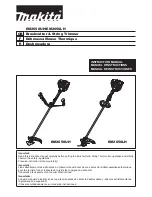
16 ORIENTATION
User’s manual
Planmeca Chairside CAD/CAM solution 67
16 ORIENTATION
Orientation is the selected model position for Autogenesis
to propose the new restoration. Autogenesis in turn uses
this set position as a starting point for cusp height and
marginal ridges based on the adjacent teeth.
The first scan determines the initial positioning of the
model.
Orientation affects two major aspects:
• Design - Orientation plays a large part in Autogenesis and
determining that the anatomy aligns with the adjacent
teeth.
• Milling - The path of insertion determines the Orientation
needed for milling. In order for a restoration to mill out
properly, the margin and axial walls must be visible from
the occlusal view.
In most cases, these two factors can be accomplished
with one Orientation and will only need minor adjustment.
There are situations when greater adjustments to
Orientation are required.
16.1 Intraoral scanning examples
• Tooth position and size of the patient’s mouth can
sometimes make it difficult to get a perfectly positioned
first scan.
• Depending on an anterior tooth’s placement and whether
you are right or left handed, it may be necessary to point
the scanner in the wrong direction. If the tip of the scanner
is pointing towards the mesial instead of the distal, then
the surface indicators on the model will be incorrect until
the Orientation is changed, see section 16.7 “Rotating the
16.1.1 Model or impression scanning
If you accidentally scan a model or impression backwards
(with the scanner pointing towards the mesial), see
section 16.7 “Rotating the model” on page 73. Only the
preparation model can be turned around. If you scanned a
pre-op, buccal bite, bite registration, or opposing model
backwards, then they must be rescanned. When the
Margin
tab is selected, Orientation is automatically
activated. The model displays with the Orientation Circle.
















































